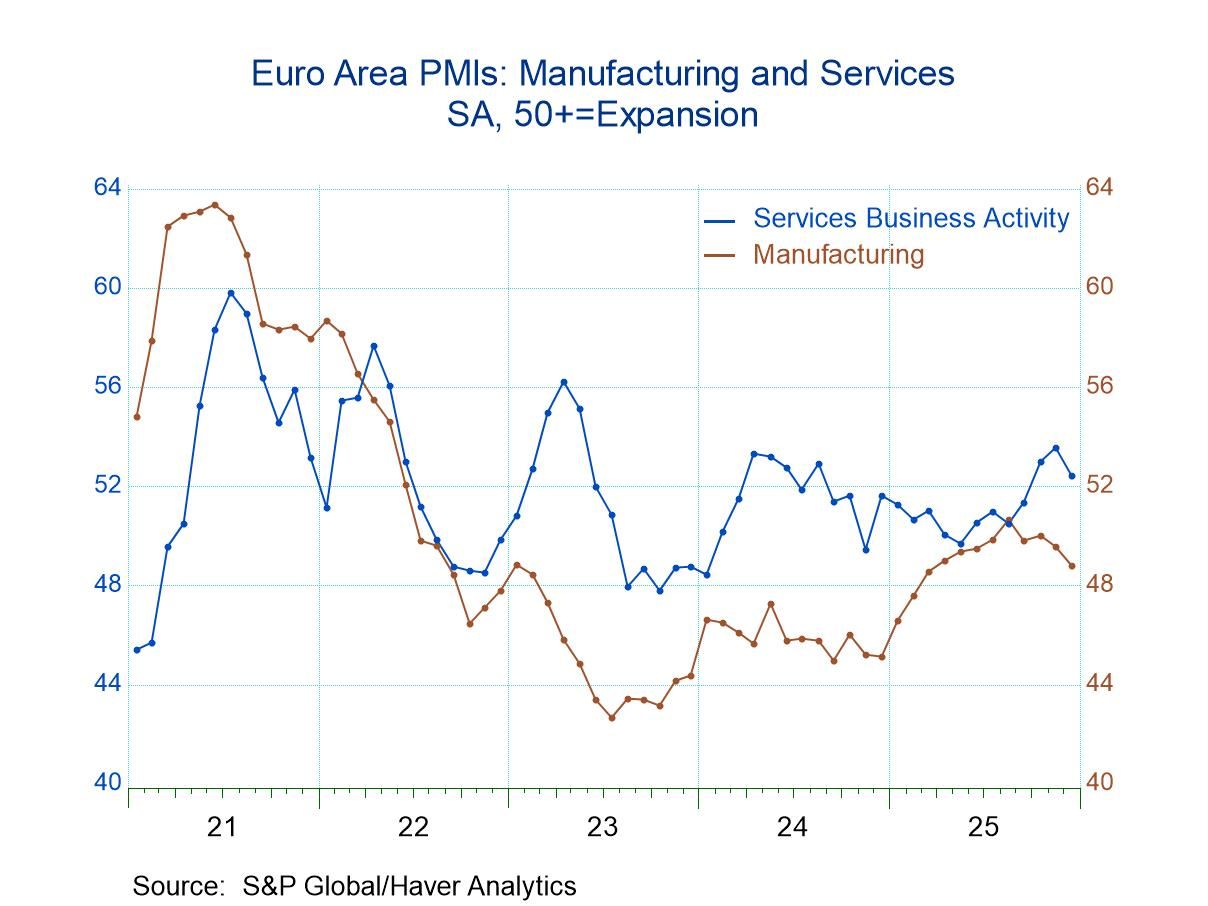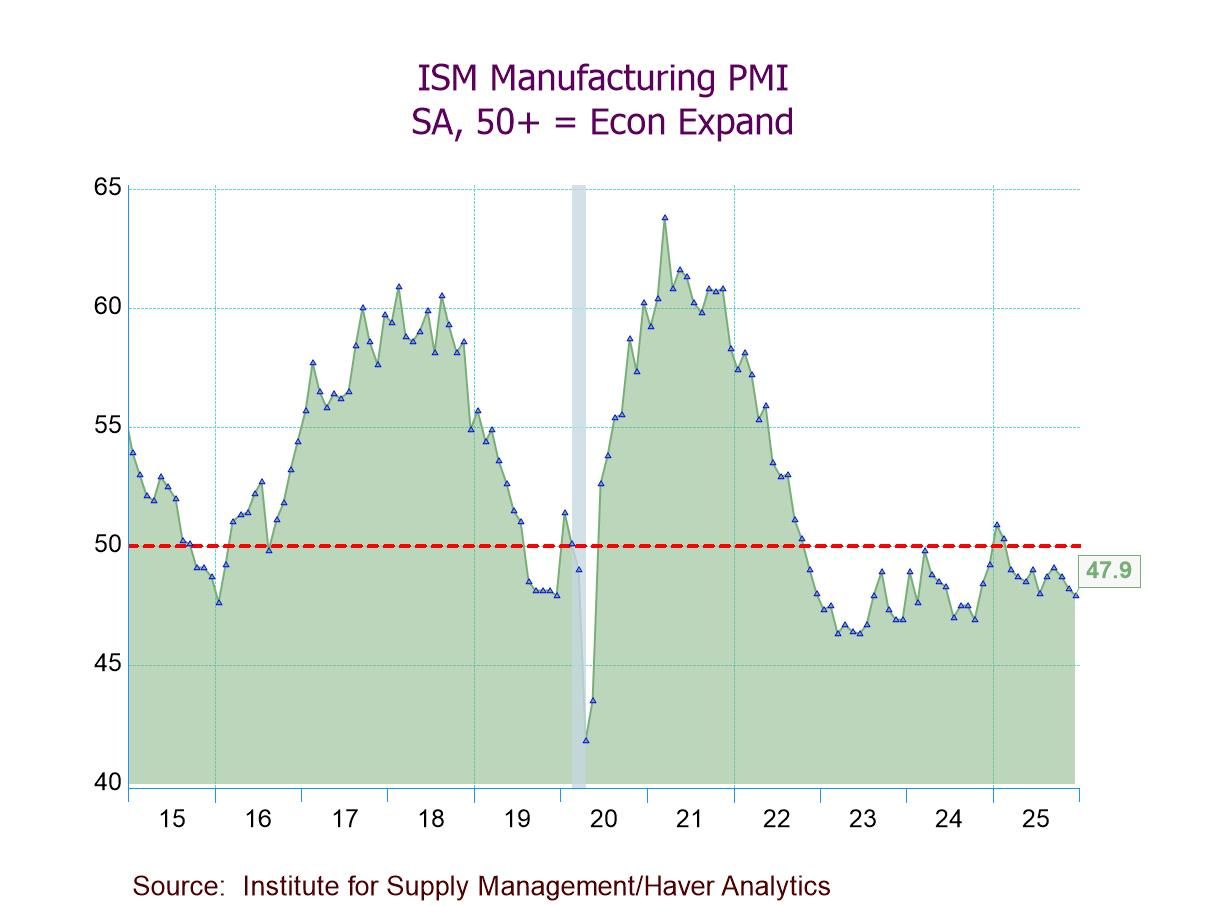 Global| Jan 04 2024
Global| Jan 04 2024Charts of the Week: Soft Landing Narratives
by:Andrew Cates
|in:Economy in Brief
Summary
The growing belief that central banks may start easing cycles within the next few months (chart 1), coupled with the increasing plausibility of a soft landing for the world economy, has fuelled a rally in financial markets over recent weeks (charts 2 and 3). This optimism has been bolstered by data showing a continued easing of inflationary pressures (chart 4). However, the main catalyst was the latest projection in mid-December from the Federal Reserve, which indicated three 25bps policy rate cuts in 2024, more than previously expected (chart 5). That optimistic market appraisal, nevertheless, raises several questions about the global economic outlook. Latest data, for example, suggest that China’s economy is still in the doldrums (chart 6). And expectations of easing cycles in several major economies next year seem somewhat inconsistent with recent communications from other central banks. If the global dataflow elicits more upbeat messages in coming weeks central banks might also of course become more hesitant to ease monetary policy.
The policy rate consensus The latest Blue Chip Financial Forecasts survey reveals a broad consensus that easing cycles will begin within the next few months in most major developed economies. In chart 1 below we show the spread between the consensus forecast for policy rates in 12 months’ time versus 3 months’ time. Since those forecasts for policy rates in 3 months’ time are more or less the same as their current level, the data suggest that the Bank of Canada (BoC) is expected to embark on a relatively aggressive easing cycle during the latter stages of this year. The Reserve Bank of Australia (RBA), in contrast, is expected to be more hesitant compared with, for example, the Fed, the ECB and the BoE.
Chart 1: Blue Chip Financial Forecasts Survey: Projected changes in policy rates in the year ahead

Equity markets Equity markets in the US experienced a strong year in 2023, with investable market assets logging more than 25% of total dollar returns (chart 2). By sector, US equities were lifted by a strong performance in information technology and communication services, while utilities and energy partially dragged. On the flip side, emerging market (EM) equities posted a comparatively weaker outturn, with total dollar returns of only 10.5%. By region, China was among the key drags on EM equity performance, amid chronic investor pessimism regarding the economy. However, relative outperformance by economies with more promising narratives (e.g., Brazil, India) or by those with tech-heavy bourses (e.g. Taiwan) helped to reverse China-induced declines.
Chart 2: Equity market performance in 2023

The US dollar The trade weighted value of the US dollar ended 2023 roughly where it started the year, with fluctuations through the course of the year driven mainly by market perceptions of the Fed’s monetary policy (chart 3). On balance, the US dollar depreciated by about 2%, driven mainly by the euro’s relative strength over the past 12 months. The dollar was partially buoyed, however, by significant yen depreciation, driven, in turn, by the Bank of Japan ultra-loose monetary policy compared with other major economies.
Chart 3: The trade weighted value of the US dollar

Commodity prices Headline CPI inflation rates have drifted lower over the last few months partly thanks to falling global commodity prices. In chart 3 below we illustrate this via a newly revised commodity price index for the OECD from the Hamburg Institute of International Economics (HWWI) and which has been newly added to our commodity price database (CMDTY). The real-time version of this index specifically fell by 29.4% y/y in November. And as chart 4 below suggests that bodes well for the likely evolution of headline CPI inflation in the advanced economies in the period immediately ahead.
Chart 4: Commodity prices in the OECD versus headline CPI inflation in advanced economies

Market expectations of Fed policy Falling US inflation coupled with the aforementioned interest rate revisions from the FOMC have marshalled further declines in market expectations of Fed policy over the past few weeks. Futures markets are specifically now pricing in nearly 150bps of Fed rate cuts by the end of this year (see chart 5 below). That’s around 50bps more easing than implied by the Blue Chip consensus forecasts shown in chart 1 above and 75bps more than the FOMC anticipates.
Chart 5: US Fed Fund rates expected by futures markets in December 2024

China’s economic outlook China faces a difficult start to 2024, with many of the challenges it faced persisting from last year. For one, China faces continued weakness in consumer confidence, which plummeted in early-2022 and has not recovered meaningfully since. The consumer aside, China has to contend with a continued fallout in its property sector too, amid dwindling investment and sales. Besides the property sector, China may also face increased pressures to address investor concerns regarding its local government debt, which has grown significantly over recent years (see chart 6).
Chart 6: China: consumer confidence versus levels of local government debt

Andrew Cates
AuthorMore in Author Profile »Andy Cates joined Haver Analytics as a Senior Economist in 2020. Andy has more than 25 years of experience forecasting the global economic outlook and in assessing the implications for policy settings and financial markets. He has held various senior positions in London in a number of Investment Banks including as Head of Developed Markets Economics at Nomura and as Chief Eurozone Economist at RBS. These followed a spell of 21 years as Senior International Economist at UBS, 5 of which were spent in Singapore. Prior to his time in financial services Andy was a UK economist at HM Treasury in London holding positions in the domestic forecasting and macroeconomic modelling units. He has a BA in Economics from the University of York and an MSc in Economics and Econometrics from the University of Southampton.






